Part II. The Hansa Lands and France
Chapter 33. Up the Meuse [November 15, 1347]
Cultural Explanations
 |
Part II. The Hansa Lands and France Chapter 33. Up the Meuse [November 15, 1347] Cultural Explanations |
|
|
In this chapter Jacques contracts the disease known as "St Antoine's Fire" | ||
| Fish, Nieiddash, Bávlos, Jacques, Bermont, Fire of St Antoine |
In this chapter, Bávlos continues his journey up the Meuse river. At the village of Sauvigny, the friends purchase a loaf of rye bread from which Jacques contracts the disease known as "St Antoine's Fire." In seeking help for his friend, Bávlos brings Jacques to the monastery at Bermont where he purchases help from the monks by giving them the ring he had received from King Magnus. He visits Jacques's family in the village of Domrémy and learns that Jacques's real surname is Arc. He receives directions on how to reach Paris.
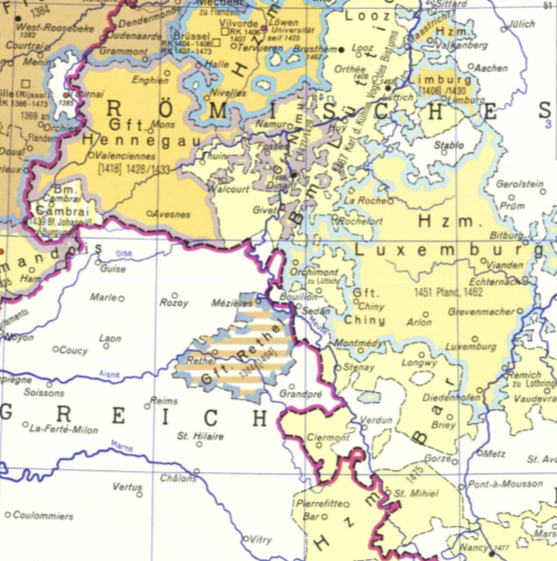 |
| Map showing Duchy of Bar. The village of Domrémy is.... the River Marne flows eastward from the duchy toward Paris. |
Jacques has led his friends up the Meuse, perhaps to show off his new friend and his reindeer in his home village. Sauvigny was a relatively large village directly on the Meuse, about three miles from the Hospital of Gerbonvaux where Jacques is eventually brought. The hospital and the associated chapel of Notre Dame de Bermont are in turn located in the Forest of Greux, about one-and-half miles from the village of Domrémy. Another, later, member of the Arc family--St. Jeanne d'Arc (c. 1412-31)--made a practice of visiting the chapel of Bermont each Saturday afternoon. It was there that she first heard the voices of saints who instructed her in how to bring about victory for France in the Hundred Years' War. Jacques d'Arc is a fictional character, although Jeanne's father was named Jacques.
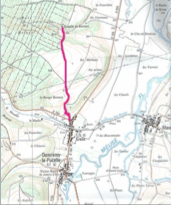 |
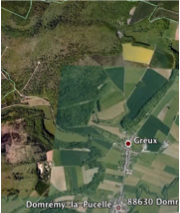 |
Map showing route from village of Domrémy to chapel of Bermont; map by Roger Brisson; click HERE for site |
Google Earth image showing same area. |
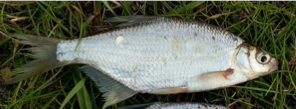 |
| Silver Bream. Image courtesy Piet Spaans; Wikipedia Commons |
Bávlos catches several small fish of a variety that he knows by its Finnish name, pasuri. This species, the silver bream (Blicca bjoerkna) is found in rivers and lakes from central Finland south to the Mediterranean. It is generally thin and scaly and not considered a good fish for eating, although it can be plentiful in French rivers. Its French name, which Bávlos did not know, is la brème.
The Hospital of Gerbonvaux was actually a sanitarium for people suffering from leprosy and other diseases. It was run by the Order of St. Norbert, an order of canons founded by St. Norbert in 1120. The canons ran hospitals in various parts of France.
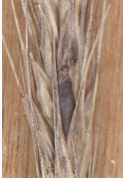 |
| Rye ergot. Image courtesy Rasbak, Wikipedia Commons |
The Fire of St. Antoine (St. Anthony's Fire) was the medieval name for a condition caused by ingesting rye infected by a particular fungus (Claviceps purpurea). Known today as ergot poisoning or ergotism, this form of fungal poisoning causes severe nausea, diarrhea, hallucinations, and a severe burning sensation in the outer limbs. It can lead to gangrene and death. During the medieval period, such poisoning was treated by changing one's diet to avoid rye and include pork and other high-fat foods. The medieval name for the condition came from another religious order, the Hospital Brothers of St. Antoine, founded around 1095, who were particularly known for their work in treating the disease.
 |
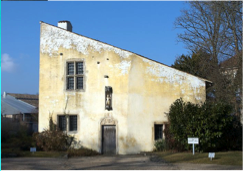 |
| Chapel of Bermont and Hospital of Gerbonvaux. Image courtesy Francis Montignon, Wikipedia Commons | Arc family home in village of Domrémy. Image courtesy Thiemma Gamma, Wikipedia Commons |
The Chapel of Bermont was a small church alongside the Hospital of Gerbonvaux. It contained a statue of the Virgin Mary which was eventually moved to the Basilique du Bois Chênu. It was before this statue that St. Jeanne d'Arc first heard her voices.
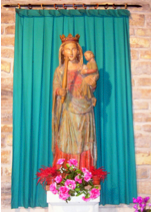 |
| Statue of Our Lady, formerly at Chapel of Bermont. Image courtesy Frikar, Wikipedia Commons |